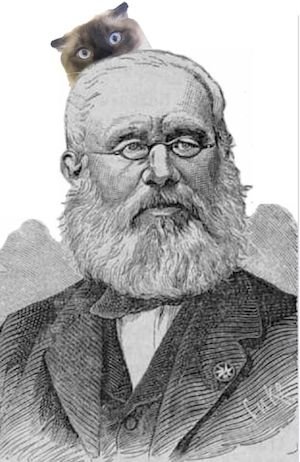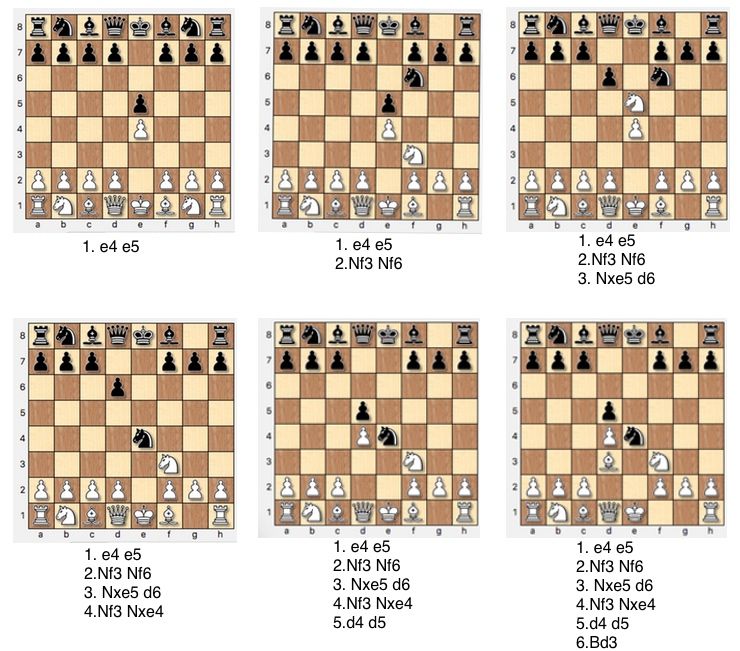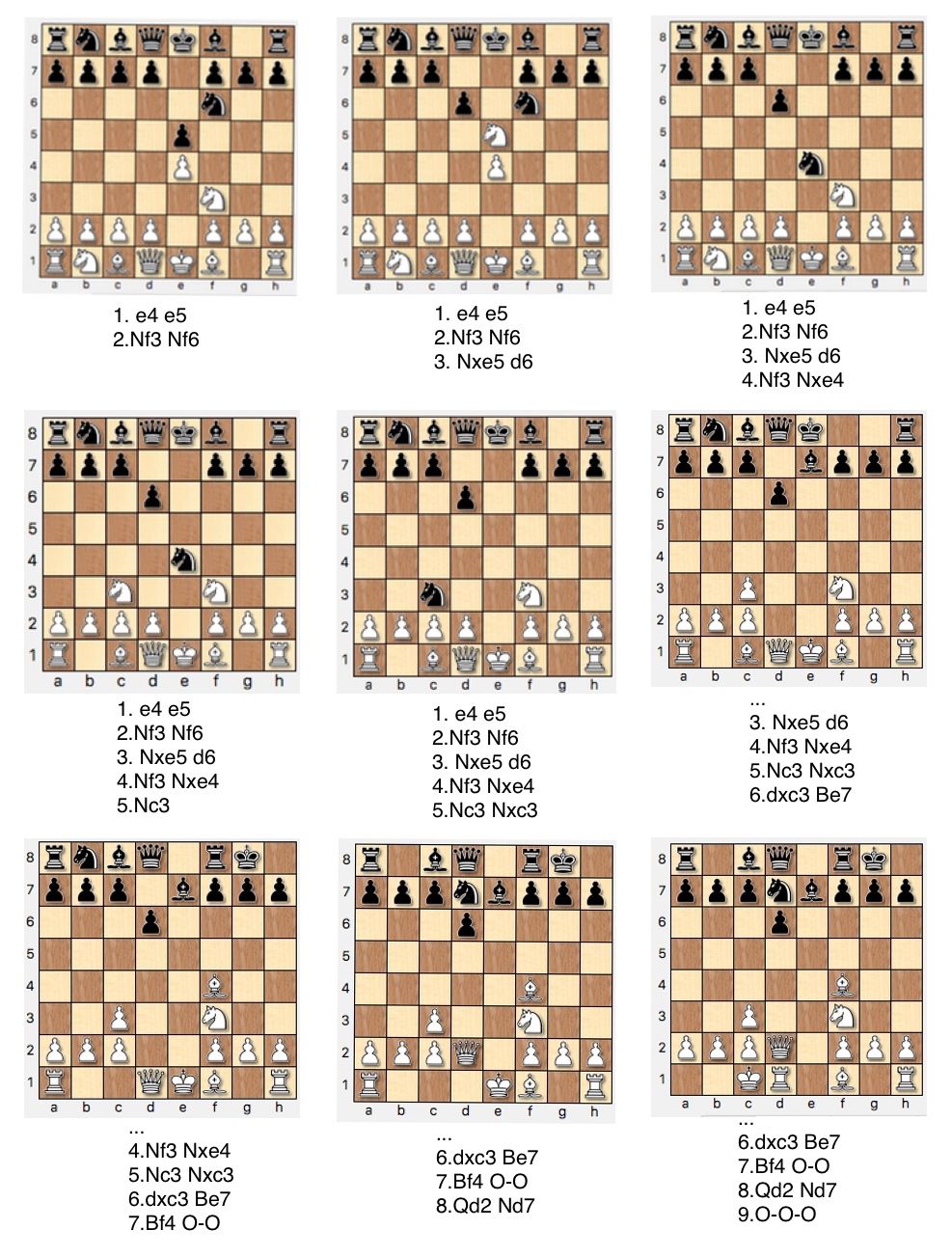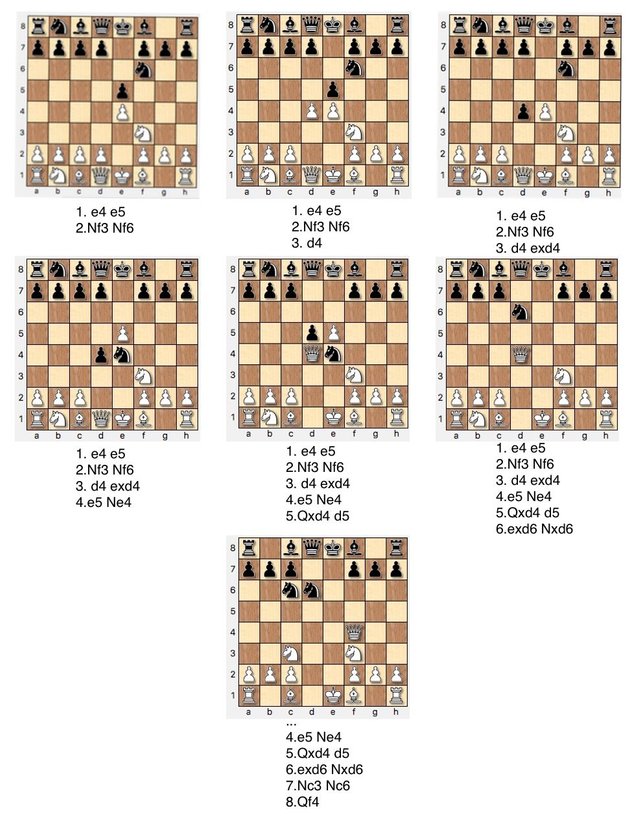Chess Class #3: The Petrov Defense or Russian Game and Memorization Technique
This is the third in a series of articles that provide a fun way to learn the strategy and history of specific chess openings and a nifty memorization technique that I created.
You can check out more of my reasoning for making this series in Part 1, but in essence this is intro type learning for fun and to promote chess in general, not a substitute for real studying.
So in this edition we are looking at the Petrov Defense sometimes called the Russian Game. It is not the most popular or successful defenses, but I've seen it a lot and it's good to know. Especially in amateur games it can be used by black to avoid more commonly studied lines like the Ruy Lopez, and white may by thrown off by the symmetrical play. Despite a reputation as a dull response, there are good attacking possibilities.
It usually requires patience on both sides to find an advantage, and therefore is a very solid defense for black. If you've studied.
We will be looking at the main line, a sharper approach called the Nimzovich Attack, and the Steinitz Variation. We'll also look at a very simple trap to avoid.
History of the Petrov
A Russian grandmaster of the mid-nineteenth century named Alexander Petrov paved the way for this system. Having also been investigated by other Russians like Carl Jaenisch it is also called the Russian Game in some places[1].

Petrov was a child prodigy and usually remembered as Russian's first great chess grandmaster. That's saying a lot, because if you hadn't heard, Russians and chess. yep. Anyway,
Strategy
In general, by playing the Petrov, black is starting with a stalwart symmetrical structure and trading material early, trying to avoid early attacks. However, as is usual in chess, you can blunder your way into trouble very early if you don't study :-)
Here is the basic, main line Petrov:

White and black both make claims on the center, 1. e4 e5, the knights also both attack the center, 2.Nf3 Nf6. White takes the center pawn with the knight, black attacks the white knight, 3.Nxe5 d6 which retreats, 4. Nf3, black takes back the pawn, 4... Nxe4, and white continues his claim on the center, black supports his knight in the center and white uses the bishop to attack the knight trying to drive it back, 5.d4 d5, 6.Bd3. This is the main line of the Petrov.
After playing these moves, white's goal is usually to try and drive off the black knight while moving pieces out, moves like pawn to c4 and rook to e1 after castling. He can also put the queen out before the bishop, trying to trade off material early. This is what the Petrov is most known for: white is able to trade material off forcefully and have a good chance at a draw if white wants to.
Now you may ask, why doesn't black just take back the pawn after 3.Nxe5 as below?

This is the trap I was talking about. If black takes back we end up with this board:

Then the white queen just has to attack the knight, the knight moves out of the way, and BOOM discovered check on the king and the knight is attacking the black queen, who can't escape.

Those moves are:
1.e4 e5
2.Nf3 Nf6
3.Nxe4 Nxe5
4.Qe2 Nf6(doesn't really matter where the black knight goes though)
5.Nc6 and the black queen falls.
Nimzovich Attack
Now we will go over an opposite side castling variation, called the Nimzovich Attack, that can lead to more exciting play. As we learned in lesson 1, castling on the opposite side can open the board and lead to more tactical ideas. The line starts as the main line, but after 4...Nxe4, white plays 5.Nc3(instead of 5.d4). Here it is:

Basically the idea is to let black double white's pawns on the c-file, and then those doubled pawns actually protect the king if the king is castled queenside. White has both bishops and queen in good positions to attack black's queenside, so black castles king side. Then white can immediately begin pushing it's kingside pawns up the board to attack the king.
Steinitz or Modern Attack
Pioneered in the late 1800s by Wilhelm Steinitz of Austria, the Charles Barkley of chess, it offers black a choice of which pawn to take and leads most frequently to a long tactical line seen at master level play. This line diverges from the main line with 3.d4.
This gives black a choice, either take the d pawn or the e pawn. The capture of the e pawn leads to a long tactical sequence that it would be most likely that white would know(since white offered the choice). You can never be sure, but we'll choose the simpler path to even things out, taking the pawn with 3...exd4. Here is the line:

This is a safe choice for black against the Steinitz attack and leaves the position equal.
Memorization
Using my handy little (admittedly imperfect) mnemonic system let's memorize these variations. For more details about the system check out lesson one.
Main Line
1.e4 e5 - Eddie and Ellie
2.Nf3 Nf6 - had a frightening night on friday night
3.Nxe5 d6 - A horse scared Ellie who dropped her doll
4.Nf3 Nxe4 - The horse ran away, then ran towards Eddie
5.d4 d5 - Daniel asked Dana
6.Bd3 - to get the Dave the Bishop
Petrov Trap
1.e4 e5 - eddie and ellie
2.Nf3 Nf6 - had a frightening night on Friday night
3.Nxe4 Nxe5 - a horse scared ellie and kicked eddie
4.Qe2 Nf6 - queen elizabeth cried that night (good enough :-)
5.Nc6
Nimzovich Attack
1.e4 e5 - Eddie and Ellie
2.Nf3 Nf6 - had a frightening night on friday night.
3.Nxe5 d6 - A horse scared Ellie who dropped her doll
4.Nf3 Nxe4 - The horse ran away, then ran towards Eddie
5.Nc3 Nxc3 - It was a cold night, and the horse was cold
6.dxc3 Be7 - Dave jumped on the horse and called Bishop Erik
7.Bf4 O-O - Bishop Frank answered from the castle
8.Qd2 Nd7 - Queen Diana took her other dark horse
9.O-O-O - to the castle
Ok that last one is kind of ridiculous but it's better than nothing! If you practice the story while making the moves it helps.
Steinitz Attack
1.e4 e5 - Eddie and Ellie
2.Nf3 Nf6 - had a fun night on friday night. (let's make this a happier story)
3.d4 exd4 - with Daniel. Daniel kissed Ellie (oh yeah that's happy!)
4.e5 Ne4 - Eddie told Elliot to bring his horse down
5.Qxd4 d5 - The queen arrested Daniel who was married to Dana (uh oh)
6.exd6 Nxd6 - Elliot made a pass at Dana (capturing enpassant) and Eddie galloped over on his horse
7.Nc3 Nc6 - It was a cold, cold night
8.Qf4 - and the queen was finished
whoa, drama!
Fin.
Sources
https://en.wikipedia.org/wiki/Petrov%27s_Defence. Chess Openings, chessgames.com
"Chess Openings: An Exciting Line for White Against Petrov's Defense: The Nimzovich Attack" Aaron Lif
The voices in my head


nice strategy ..can you also read my short poem ;)
https://steemit.com/flowers/@zeth/flower-of-love
thanks,
Congratulations! This post has been upvoted from the communal account, @minnowsupport, by cryptastic from the Minnow Support Project. It's a witness project run by aggroed, ausbitbank, teamsteem, theprophet0, and someguy123. The goal is to help Steemit grow by supporting Minnows and creating a social network. Please find us in the Peace, Abundance, and Liberty Network (PALnet) Discord Channel. It's a completely public and open space to all members of the Steemit community who voluntarily choose to be there.
If you like what we're doing please upvote this comment so we can continue to build the community account that's supporting all members.